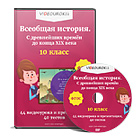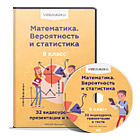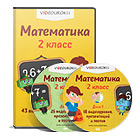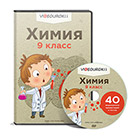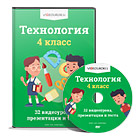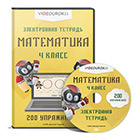FORM 5
“WORLD ANIMALS”
Objectives:
обучающие:
— освоить новые лексические единицы по теме «Животные мира» во всех видах речевой деятельности;
— научиться рассказывать о животных и насекомых, домашних питомцах;
— научиться описывать животных, питомцев;
— освоить множественное число и использование в связной речи глаголов в Present Simple;
— научиться составлять краткое резюме(fact file);
развивающие:
— развивать навыки и умения во всех видах речевой деятельности;
— развивать умение запоминать новые слова;
— развивать умения, составляющие лингвистическую компетенцию: сопоставление языковых явлений в изучаемом и родном языках;
воспитательные:
— воспитывать любовь к животным, экологическую культуру в целом.
— расширять кругозор учащихся.
Equipment:
Student’s book “Spotlight ”(Express Publishing),
workbooks,
a laptop,
presentation “Wild and domestic animals”,
a tape recorder,
pictures of animals,
riddles,
toys (animals), a ball, handouts.
Procedure of the lesson
I. Starting moment. Greeting
T: Good morning, children! I’m glad to see you. Hope you are fine.
Cl: Good morning, teacher! Hope you are too. Nice to see you too.
T: Look at the blackboard, please. Can you tell me what we are going to speak about?
Cl: About animals.
T: Right you are. During the lesson you will read, listen, speak and write about different animals.
II. Main body
1.Warming up
1.Phonetic drills
-(t) (w) (ae) (ei) (dg) (i:)
- My cat is black,
My cat is fat,
My cat likes rats,
Rats grey and fat.
-A black cat sat on a mat and ate a fat rat
- I am a dog,
my name is Jack.
My hair is brown,
my nose is black.
-- I am a cock,
my name is Ted.
My tail is long,
my head is red.
- - Little mouse, little mouse,
Where is your house?
- Little cat, little cat,
I have no flat.
I am a poor mouse,
I have no house.
- Little mouse, little mouse,
Come to my house.
- Little cat, little cat,
I cannot do that.
You want to eat me!
2. Phonetic reading of lexis on the topic
WILD ANIMALS: LION,TIGER, WOLF, ZEBRA, CROCODILE, GIRAFFE, FOX, RHINO,SQUIRREL, ELEPHANT, CAMEL, DEER, LEOPARD, MONKE, POLAR BEAR, WALRUS,PENGUINE, RACCOON, KANGAROO, SNAKE, FROG, PARROT, SPARROW, PEACOCK, HEDGEHOG, SHARK, TORTOISE, DONKEY, RAT
INCECTS: FLY, BUTTERFLY, GADFLY, LADYBIRD, MOSQUITO
DOMESTIC ANIMALS: HORSE, COW, SHEEP, GOAT, RABBIT, CAT, KITTEN, DOG, PUPPY, HAMSTER, MOUSE, GOOSE, DUCK, HEN , CHICKEN, COCK, PIG, SWINE
IN THE WOOD, IN THE JUNGLE, IN THE DESERT, IN THE SEA, IN THE YARD, ON THE FARM
2. ABC of animals
3. True friends (international words)
True friends: zebra, crocodile, cobra, …
4. Presentation – “Wild and domestic animals”
5. Spidergram “Animals”
6.Grammar - Plurals
(a game with a ball )
7. Wild, domestic, farm animals, pets
(pupils name toys and place them according to their habitats)
8. Find names of wild and domestic animals on the word- square. Work in pairs and produce a list of words.
| C | O | B | A | H | O | R | S | E | Z |
| H | K | A | M | D | E | E | R | P | T |
| I | Z | D | N | P | D | M | F | R | U |
| C | M | G | F | I | C | O | W | A | R |
| K | L | E | O | G | B | U | S | B | K |
| E | B | R | X | O | C | S | I | B | E |
| N | S | H | E | E | P | E | A | I | Y |
| H | E | D | G | E | H | O | G | T | U |
| P | M | S | Q | U | I | R | R | E | L |
| E | A | G | L | E | T | D | U | C | K |
Key Words: chicken; pig; horse; cow; turkey; sheep; duck;
squirrel; eagle; mouse; badger; fox; deer; rabbit; hedgehog.
9. Song “ If you are happy and you know it…”
10. Reading. Listening
If you want to know more about animals, you should read the text.
Exercise 3, page 66.
Find the names of 3 countries, 5 animals, 5 colours, 5 other objects.
Explain the words in bold.
11. If you want to know more about animals, you should visit a wildlife park. You must remember some rules. These signs will help you. Write sentences about a wildlife park.
We can: take photos , relax, watch the animals, walk in the park.
We mustn't: drop cans, shout, smoke, swim, feed, touch.









12. Physical Warming up
- I think animals are always very active. Let’s move a little bit. Do the actions:
Jump like a hare!
Climb like a monkey!
Go like a bear!
Swim like a frog!
Fly like a bird!
Thank you. Sit down.
13. Game
(questions – answers about any animal)
14. Riddles
There are a lot of animals in the park. They are hidden. Let's find them. Match the descriptions with the animals.
1. This animal is very big. It has got a big head, long legs. It is orange and black. It is a big cat. It can run very fast. It lives in Asia. It is now very rare. It is ... (a tiger)
2. This animal is very big. It has got small eyes but they are very good. It has got very big wings. It is a bird. It is very rare. It lives in Europe and Asia. It is … (an eagle)
3. This animal isn't very big. It isn't very rare. It hasn't got long legs. It has got big eyes. It lives in trees in Australia. It is ... (a panda)
4. This animal is huge. It has got big ears and a very long trunk. It is grey. It lives in Africa. It eats leaves and fruit. People ride this animal. It is ... (an elephant)
5. This animal isn't very big. It isn't very rare. It hasn't got long legs. It can run
fast. It lives in Europe. It is red. It is a good hunter. It likes rabbits. It is … (a fox)
6. This animal is huge. It has got small ears, short legs and a big mouth. It is grey. It lives in lakes and rivers and eats grass. It is ... (a hippo)
7. This animal is huge. It has got a big head and a big body. It lives in Europe and America. It eats grass. It is very rare. It is ... (a bison)
15. Writing
Exercise 1, page 43, WB.
16. Writing
- We saw a lot of animals in the park. Complete the fact file of your favourite animal.
A(an) ..... is ..... (colour).
…. lives in ..... (place/ continent).
..... can ... (action).
..... has got ..... (parts of the body).
..... eats .... (eating habits).
I like it because it is ..... (character).
III. Summarizing
- Today we spoke about animals. Do you like animals? Where can you see them? What is your favourite animal? Why?
- Home task
1. Write a fact file about an animal in your country to talk to your classmates about it.
2. .Do exercises 2, 3 page 41, WB.















